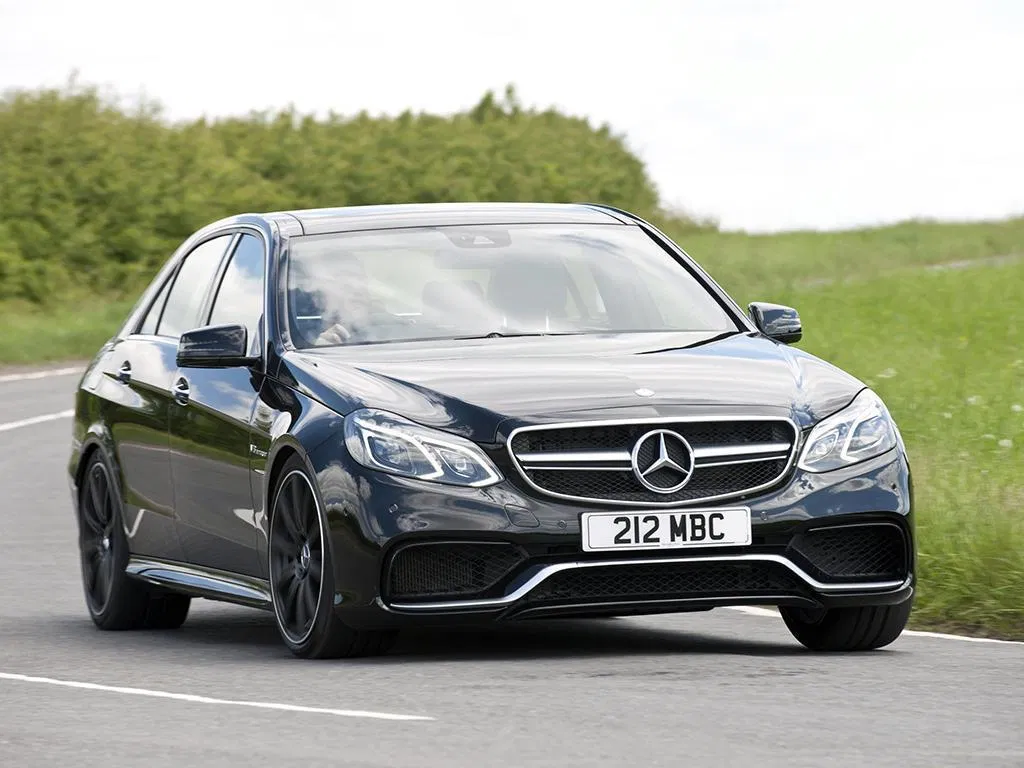Tires are one of the most overlooked but critical components of any vehicle. They are the sole contact point between the car and the road, directly impacting safety, performance, fuel efficiency, and driving comfort. Despite their importance, many drivers only think about tires when a warning light comes on or when they face a sudden flat.
Yet, the cost of replacing tires can vary dramatically depending on the make and model of the vehicle, tire size, tire technology, and even driving style. Understanding these cost differences is crucial for current and prospective car owners who want to manage their vehicle expenses intelligently.
One of the biggest factors influencing tire replacement cost is tire size. Generally, larger tires with wider tread widths cost more to manufacture and replace. Luxury and performance vehicles often come equipped with large wheels ranging from 19 to 21 inches or more, requiring specialized high-performance tires that command premium prices.
Conversely, smaller sedans and economy cars tend to use more common tire sizes that are produced in higher volumes, making replacements significantly more affordable. This alone can cause a cost disparity of hundreds or even thousands of dollars over the lifetime of the vehicle.
But tire size isn’t the only factor at play. Tire technology, such as run-flat capability or specialized summer tires designed for maximum grip, can add to the cost. Run-flat tires, for example, have reinforced sidewalls allowing drivers to continue on after a puncture, but they come with a higher price tag and often shorter tread life.
High-performance summer tires require expensive rubber compounds and manufacturing processes to deliver their performance, which also increases cost. In addition, some vehicles employ staggered tire setups, where the rear tires are wider than the front, meaning owners can’t rotate tires front-to-back to maximize tread life, resulting in more frequent replacements.
Driving habits also impact tire wear. Vehicles driven aggressively, especially performance cars or powerful electric vehicles with instant torque, tend to chew through tires faster.
Likewise, heavier cars put more strain on tires, accelerating tread degradation. Meanwhile, routine maintenance like regular tire rotations, alignments, and proper inflation can extend tire life, mitigating replacement frequency and cost.
The diversity of factors makes tire replacement cost a complex subject, but it’s one worth understanding—whether you are buying a new car, budgeting for maintenance, or looking to reduce long-term ownership expenses.
In this article, we explore five cars known for their lowest tire-replacement costs and five that top the list for having the highest expenses. By examining these extremes, we can uncover the underlying reasons behind these costs and gain valuable insight into how tire choices affect overall vehicle affordability.
Cars like the Toyota Corolla, Honda Civic, and Hyundai Elantra demonstrate how common tire sizes, balanced engineering, and longevity-friendly designs keep tire expenses manageable.
On the other end of the spectrum, models such as the Tesla Model S Performance, BMW 7 Series with run-flats, and exotic supercars like the Lamborghini Huracán showcase how tire technology, performance demands, and vehicle weight can dramatically drive up replacement costs. Whether you prioritize economy or performance, understanding these differences equips you to make smarter decisions.
Ultimately, tire replacement cost is a significant but often hidden expense that should factor into any car ownership equation. By learning about the vehicles that sit at both ends of the spectrum, drivers can better anticipate costs, choose suitable tires, and maintain their vehicles more effectively, ensuring safer driving and healthier finances.
The following sections delve into detailed examples, explaining why certain cars come with low tire costs while others require a premium, costly commitment to keep rolling safely.
Also Read: Top 10 EV Features That Come in Useful in Daily Commute
5 Cars with the Lowest Tire-Replacement Cost
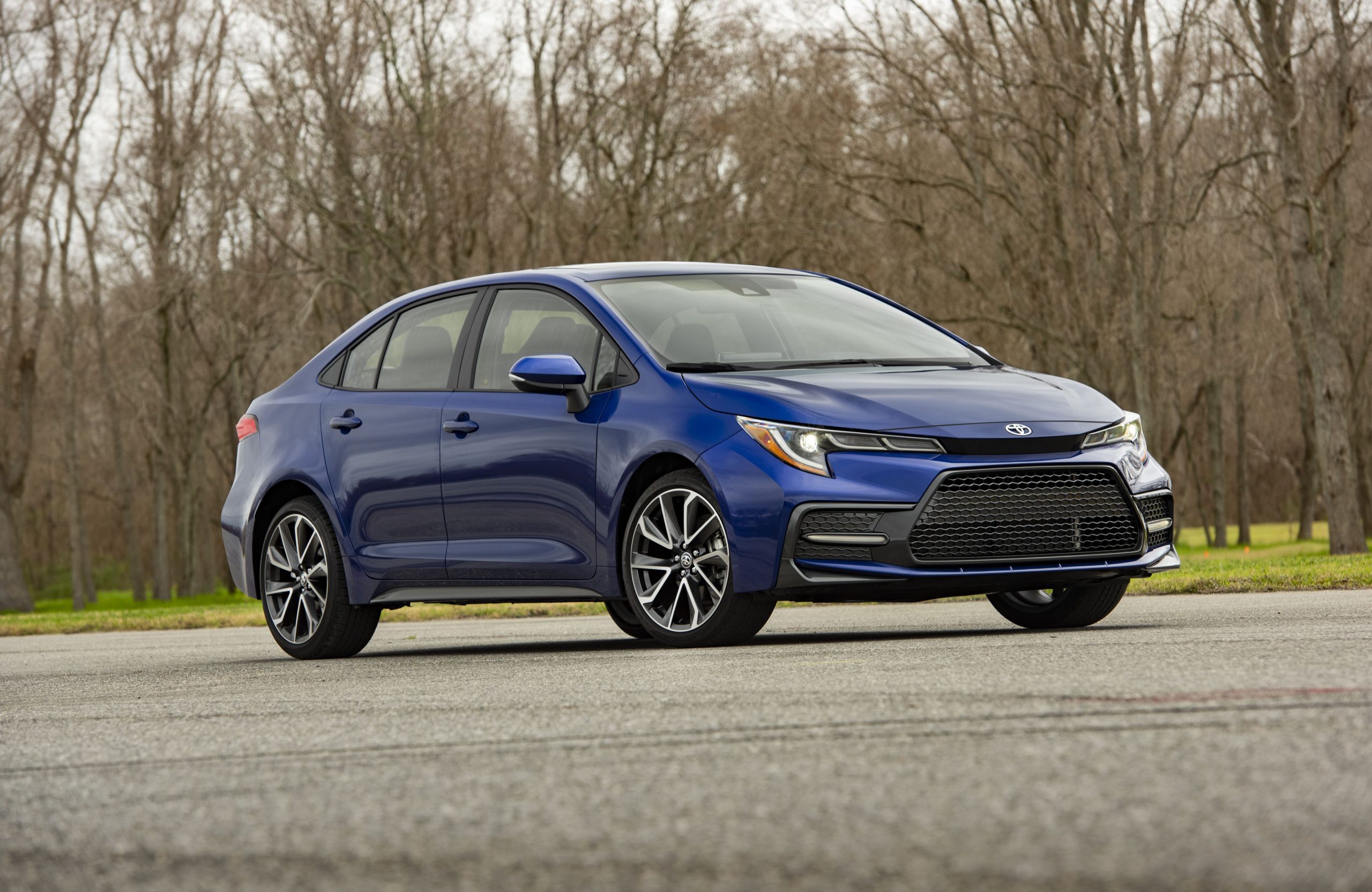
1. Toyota Corolla
The Toyota Corolla is synonymous with economical ownership, and one of the biggest factors behind that reputation is its affordable tire-replacement costs. A key reason the Corolla remains inexpensive to maintain is its use of smaller wheel sizes—usually between 15 and 16 inches—which translates directly to lower-priced tires.
Tire manufacturers produce millions of tires in these sizes, making them extremely common and affordable. Unlike larger wheels, smaller tires require less rubber and simpler construction, which means both the materials and manufacturing costs are lower.
For many Corolla models, you can purchase a set of four quality all-season tires for around $300 to $400. When factoring in installation and balancing, the total usually stays well under $600, which is a fraction of what performance or luxury cars demand.
Beyond the size, the Corolla’s engineering emphasizes durability and reliability. Its front-wheel-drive layout distributes weight evenly, and the modest engine output means less aggressive tire wear. The Corolla isn’t a car that encourages hard acceleration or fast cornering, so the tires tend to wear down gradually and evenly.
This translates into long tread life, with many owners reporting 50,000 to 70,000 miles per tire set under typical driving conditions. This longevity helps keep replacement frequency low, reducing cumulative tire costs over the life of the vehicle.
Another reason for the Corolla’s low tire costs is the widespread availability of replacement options. Virtually every major tire brand—from economy brands like General Tire and Cooper to mid-range names like Michelin and Bridgestone—offers tires designed to fit the Corolla.
This competitive market creates pricing pressure, keeping costs down for consumers. In addition, the Corolla’s straightforward tire requirements mean that buyers don’t have to sacrifice quality for cost; they can often find tires that balance longevity, performance, and price.
Finally, the Corolla benefits from Toyota’s emphasis on preventative maintenance. The vehicle’s owner’s manual clearly outlines the importance of regular tire rotations, proper inflation, and alignment checks, which help preserve tire life. Since the car is so popular worldwide, many service centers are familiar with the model and provide affordable labor rates.
This blend of manageable tire sizes, moderate wear, broad availability, and supportive service infrastructure firmly establishes the Toyota Corolla as one of the most affordable cars in terms of tire replacement.
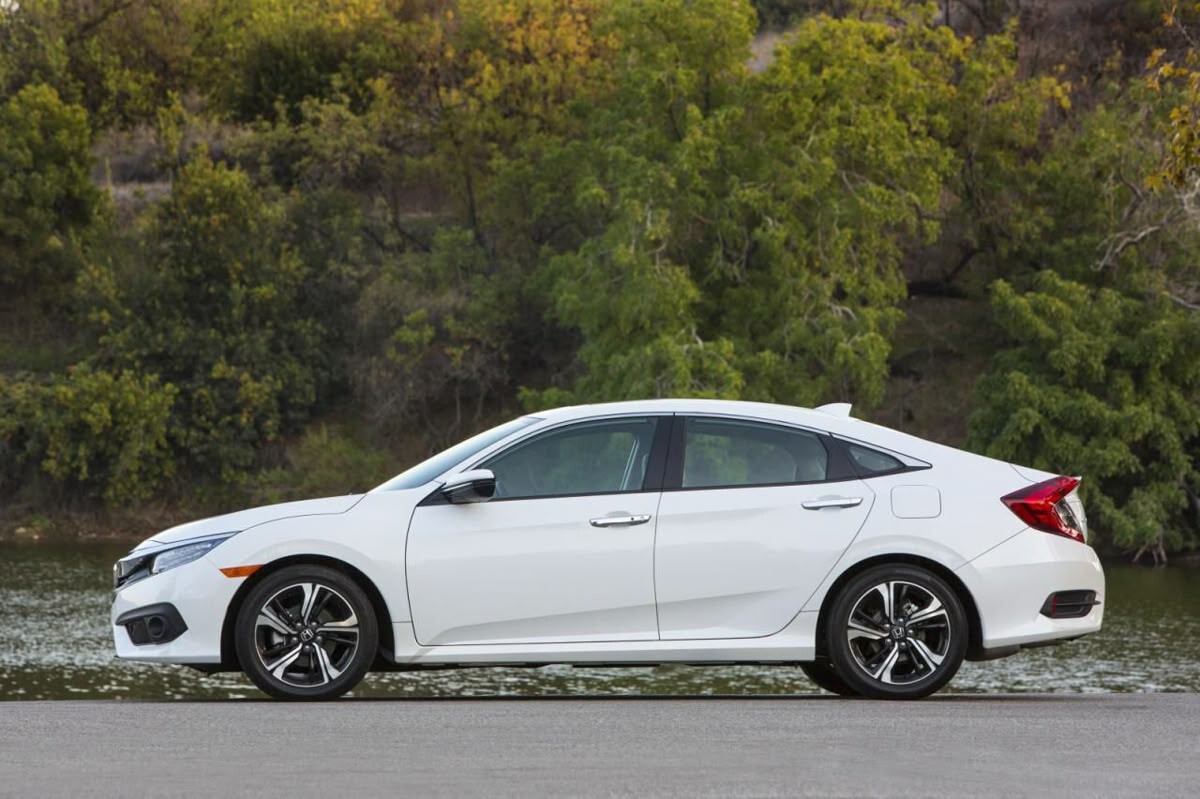
2. Honda Civic
The Honda Civic stands alongside the Toyota Corolla as one of the most budget-friendly cars for tire ownership, and its tire costs are low for many of the same reasons. Generally equipped with 15- to 17-inch wheels, the Civic’s tire sizes fall within the most common ranges on the market.
Because of this, there is an abundance of tires available, allowing consumers to shop competitively and find options tailored to their budget and driving style.
All-season tires designed for the Civic often retail in the $80 to $150 per tire range, meaning a full replacement can be done for roughly $400 to $600, including mounting and balancing, depending on the tire brand and installation shop.
One of the unique advantages of the Civic is the variety of trims and models available. From base models with small wheels to sportier trims with larger tires, the Civic caters to a wide audience.
However, even sportier versions do not stray too far from common tire sizes, maintaining affordability. The widespread popularity of the Civic means many tire manufacturers produce dedicated lines or tread patterns optimized for the model, improving availability and pricing.
Additionally, the Civic’s engineering supports long tire life. With front-wheel drive and a well-tuned suspension designed for comfort and efficiency, tire wear is typically even and predictable. The relatively light curb weight compared to many competitors means less strain on the tires during acceleration, braking, and cornering.
The result is tires that can last between 50,000 and 65,000 miles on average, provided they are rotated regularly and aligned correctly. This predictable wear pattern enables owners to get the maximum mileage out of each tire set, lowering the overall replacement frequency.
The Civic also benefits from Honda’s reputation for reliability and solid build quality, which extends to the tires and wheels. Factory wheel alignments tend to hold well over time, reducing the risk of uneven tire wear.
In addition, Honda’s clear maintenance schedule encourages owners to perform tire rotations every 5,000 to 7,500 miles, further extending tire life. Taken together, the common tire sizes, even wear patterns, and proactive maintenance culture help keep tire costs down and predictable for Civic owners.
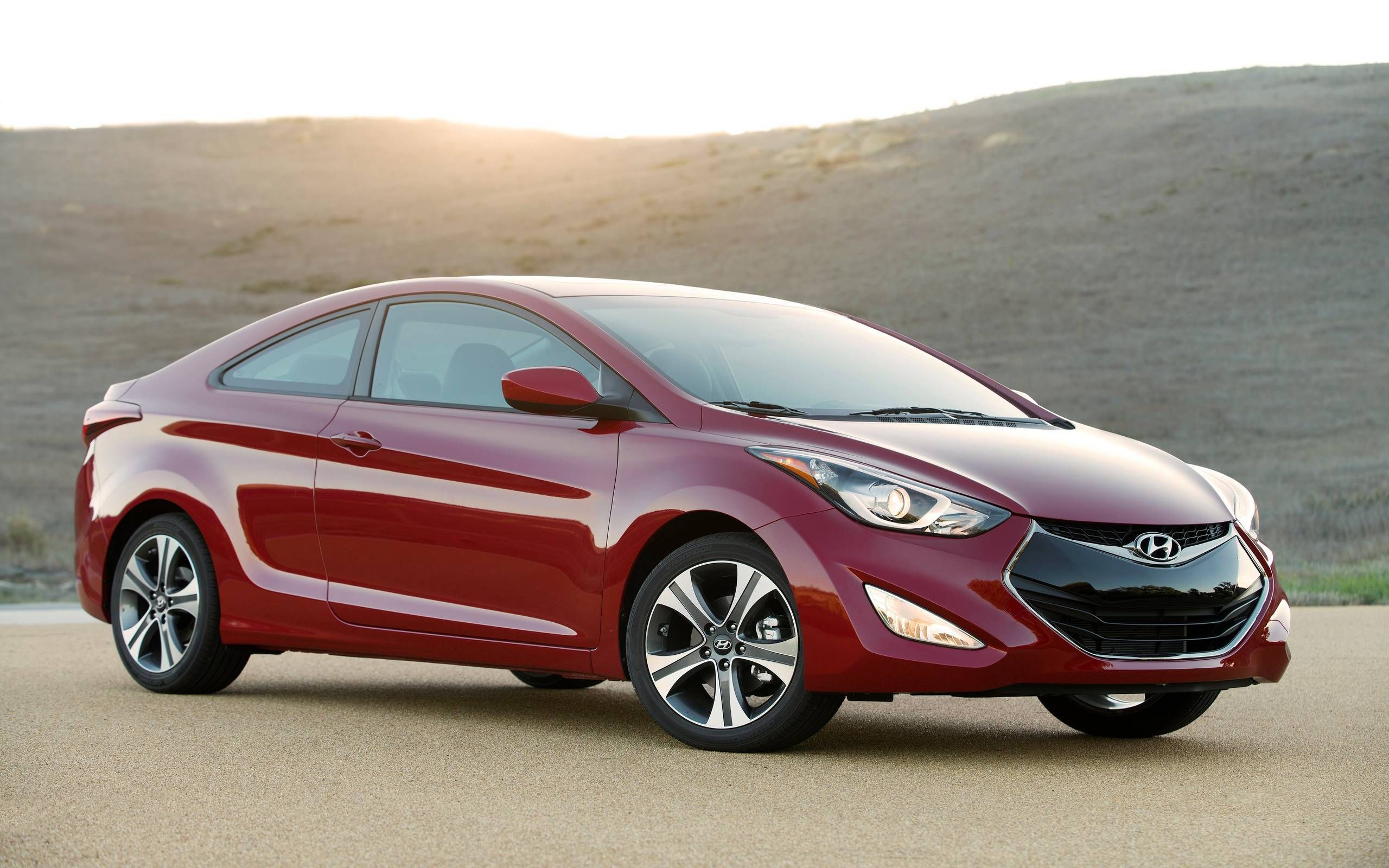
3. Hyundai Elantra
The Hyundai Elantra has come a long way in the last decade, moving from a basic budget car to a stylish and technologically advanced compact sedan. Despite these upgrades, it remains impressively affordable to maintain—especially when it comes to tire replacement. Most Elantras come with 15-, 16-, or 17-inch wheels, all of which fall into standard tire sizing categories that are readily stocked by most tire retailers.
This means replacement tires for the Elantra are both easy to find and competitively priced. A quality set of all-season tires for an Elantra can typically be purchased for $350 to $550, with installation fees adding another $50 to $150, depending on the service provider.
What makes the Elantra especially appealing for budget-conscious owners is its tire longevity. Hyundai engineers have optimized the vehicle’s suspension geometry and weight distribution to minimize uneven tire wear. The Elantra’s front-wheel-drive setup and modest power output reduce the forces exerted on tires, resulting in consistent tread wear.
Many drivers find that with proper care—including regular rotations and maintaining correct tire pressure—they can get 55,000 to 65,000 miles per tire set. This means fewer replacement cycles and lower lifetime costs.
Additionally, Hyundai’s warranty coverage often includes roadside assistance and tire-related issues, which provides extra peace of mind for owners. Hyundai also benefits from growing dealership and service center networks, helping to keep labor and installation fees competitive.
Tire manufacturers have noticed the Elantra’s popularity and produce numerous tire options tailored for it—spanning budget brands, mid-tier, and premium lines. This breadth of options lets buyers balance cost with their desired performance or comfort characteristics.
The Elantra’s tire affordability is further bolstered by its growing presence in rental and fleet services, which encourages volume sales of replacement tires and economies of scale in maintenance.
The availability of numerous tire retailers both online and locally, creates a competitive environment, ensuring that Elantra owners rarely overpay for replacements. This synergy between vehicle design, market demand, and maintenance infrastructure makes the Hyundai Elantra a standout for low tire replacement costs.
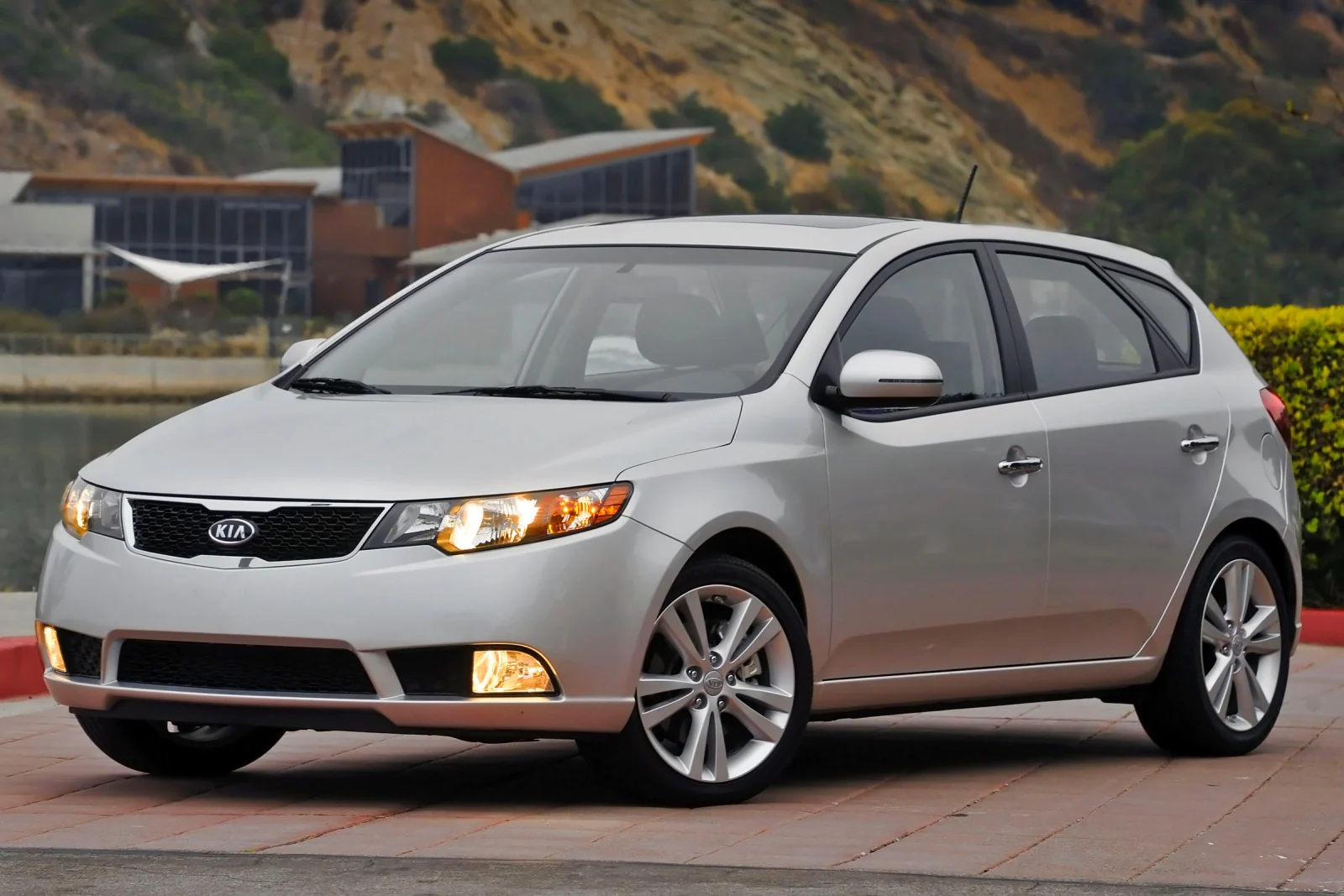
4. Kia Forte
The Kia Forte, sharing much of its platform and components with the Hyundai Elantra, benefits from many of the same factors that keep tire replacement costs low. Generally equipped with 15-, 16-, or 17-inch wheels, the Forte’s tire sizes are common and easy to source.
This availability keeps tire prices competitive, allowing owners to purchase reliable, all-season tires from brands like Hankook, Kumho, or Continental at reasonable prices. On average, a full set of new tires, including installation for the Forte costs around $400 to $550, depending on tire brand and service location.
Kia’s focus on cost efficiency extends to tire wear management. The Forte’s suspension is tuned more for comfort and fuel economy rather than performance, which means tires wear evenly and more slowly.
The car’s relatively low horsepower and torque reduce stress on tires, especially compared to sportier or heavier vehicles. With conscientious maintenance—including routine rotations and alignment checks—Forte owners report getting 50,000 to 70,000 miles from a single tire set, rivaling some of the best in its class.
Another advantage of the Forte is the vehicle’s growing popularity among younger drivers and fleet operators. This has encouraged tire manufacturers to optimize tire offerings specifically for this model and tire size, resulting in an abundance of affordable options. Tire retailers, both brick-and-mortar and online, often feature promotions or rebates on Forte-compatible tires, which further lowers costs for owners.
Finally, Kia’s commitment to driver safety and reliability means that the Forte includes tire pressure monitoring systems (TPMS) and other technologies that help maintain optimal tire conditions.
These systems alert drivers to underinflated or damaged tires early, preventing uneven wear and potential failures. Combined with widespread service availability and competitive labor rates, these features help ensure that Kia Forte owners experience minimal financial impact when replacing tires.
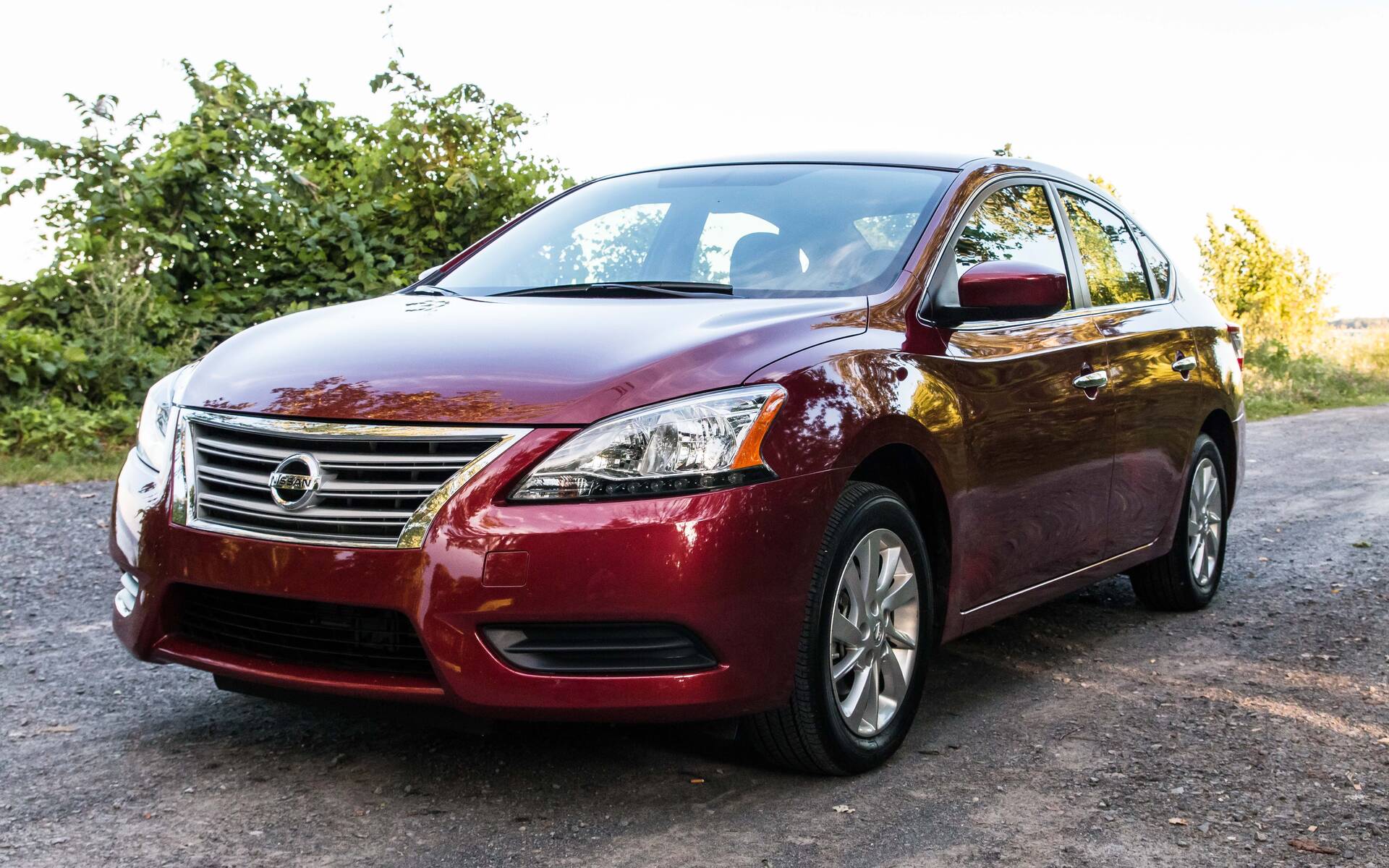
5. Nissan Sentra
The Nissan Sentra has been a staple in the compact sedan market for years, and it consistently ranks among vehicles with low ownership costs—particularly for tires. Typically equipped with 16- or 17-inch wheels, the Sentra uses standard tire sizes that are widely available and competitively priced.
The all-season tires used on most Sentras are mass-produced by many manufacturers, making them affordable and easy to source. A complete tire replacement usually runs between $400 and $600, including installation, depending on the tire brand and local labor rates.
The Sentra’s relatively light weight and conservative engine output contribute to low tire wear rates. This makes the car ideal for drivers who prioritize long-lasting tires and predictable maintenance expenses.
Many owners find they can get between 50,000 and 70,000 miles on a set of tires if they maintain proper tire pressure and rotate their tires regularly. The Sentra’s front-wheel-drive layout also helps distribute tire wear evenly across the front tires, reducing the chances of uneven tread wear that could shorten tire life.
In addition, Nissan equips the Sentra with standard tire pressure monitoring systems, alerting drivers early to pressure loss or potential tire damage.
This proactive approach helps prevent blowouts and uneven wear caused by underinflation. The availability of numerous tire service centers and mechanics familiar with Nissan models also keeps installation and maintenance costs down.
Lastly, the Sentra’s popularity has spurred a robust aftermarket for replacement parts and tires. With strong competition among retailers and service providers, Sentra owners benefit from frequent discounts and promotions on tires and related services.
This ensures that replacing tires on a Nissan Sentra remains an affordable and hassle-free process for most drivers, making it a strong choice for those seeking to minimize long-term tire expenses.
5 Cars with the Highest Tire-Replacement Cost
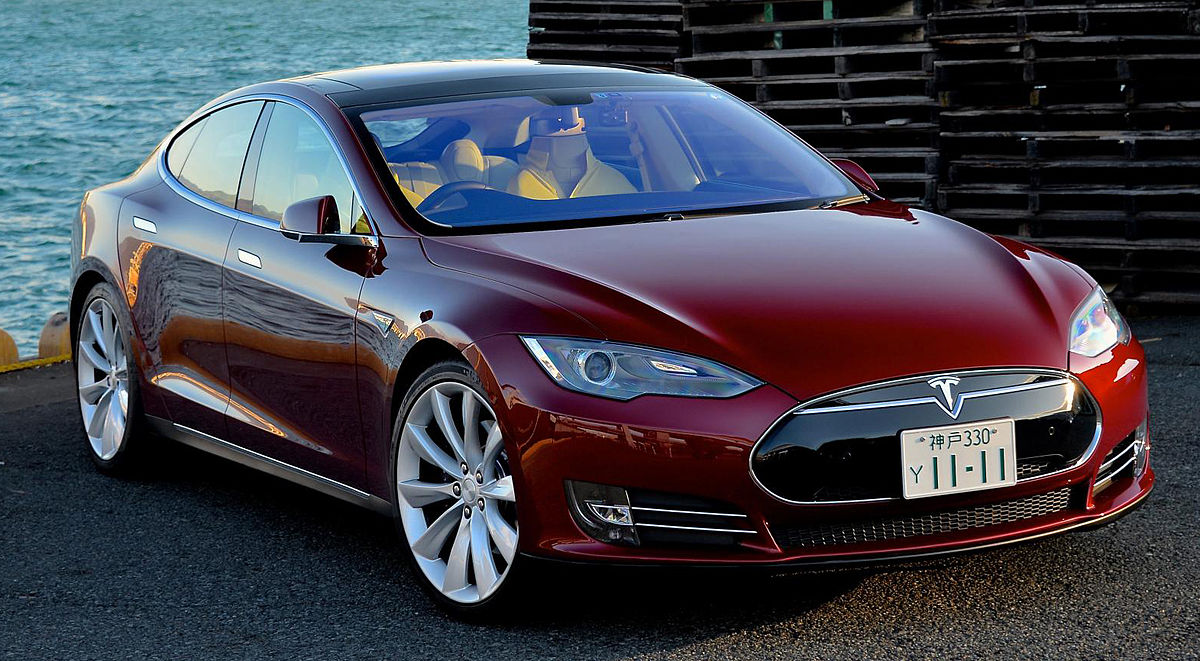
1. Tesla Model S (Performance or Plaid)
The Tesla Model S Performance and Plaid variants have redefined electric vehicle performance, offering mind-blowing acceleration and cutting-edge technology. However, one of the most notable hidden ownership expenses for these vehicles is the cost of replacing their tires.
Unlike typical sedans, the Model S Performance and Plaid come equipped with large 21-inch wheels paired with ultra-high-performance summer tires designed to handle extreme torque and acceleration forces.
These tires are not your average all-season rubber but specialized, bespoke products that command premium prices. It’s not uncommon for a set of four tires to cost anywhere between $1,500 to $2,000, and when you add installation, balancing, and alignment services, the total can easily approach $2,200 or more.
What drives these costs is more than just tire size; it’s the sheer demand placed on these tires by Tesla’s instant torque. The Model S Plaid, with its tri-motor setup producing over 1,000 horsepower, can accelerate from zero to 60 mph in under two seconds, putting immense stress on the tires.
This extreme force causes accelerated tread wear, especially on the rear tires, which bear the brunt of the power delivery. Unlike conventional cars, where tires can last 40,000 to 60,000 miles, many Tesla Model S owners report needing replacements after as few as 15,000 to 20,000 miles if they drive aggressively.
The Tesla’s weight also contributes significantly to tire wear. Battery packs add hundreds of pounds, increasing the overall curb weight to around 4,800 pounds for the Performance versions.
This additional mass causes tires to heat up faster and wear out sooner. Combined with a staggered tire setup—where the front and rear tires are different sizes—owners can’t rotate tires as freely to even out wear, leading to more frequent replacements. The limited availability of tires specifically engineered to withstand these demands means fewer options and inflated prices.
Moreover, Tesla’s specialized wheel alignment and suspension calibration require service centers familiar with the technology, and many owners find themselves limited to Tesla dealerships for precise servicing. Tesla service centers often charge premium labor rates, adding to the total cost.
Some aftermarket shops may hesitate to work on Tesla’s complex systems, forcing owners into higher-cost channels. The combination of expensive, high-performance tires, limited rotation possibilities, rapid wear, and premium service costs makes the Tesla Model S Performance and Plaid variants some of the most expensive cars in the world when it comes to tire replacement.
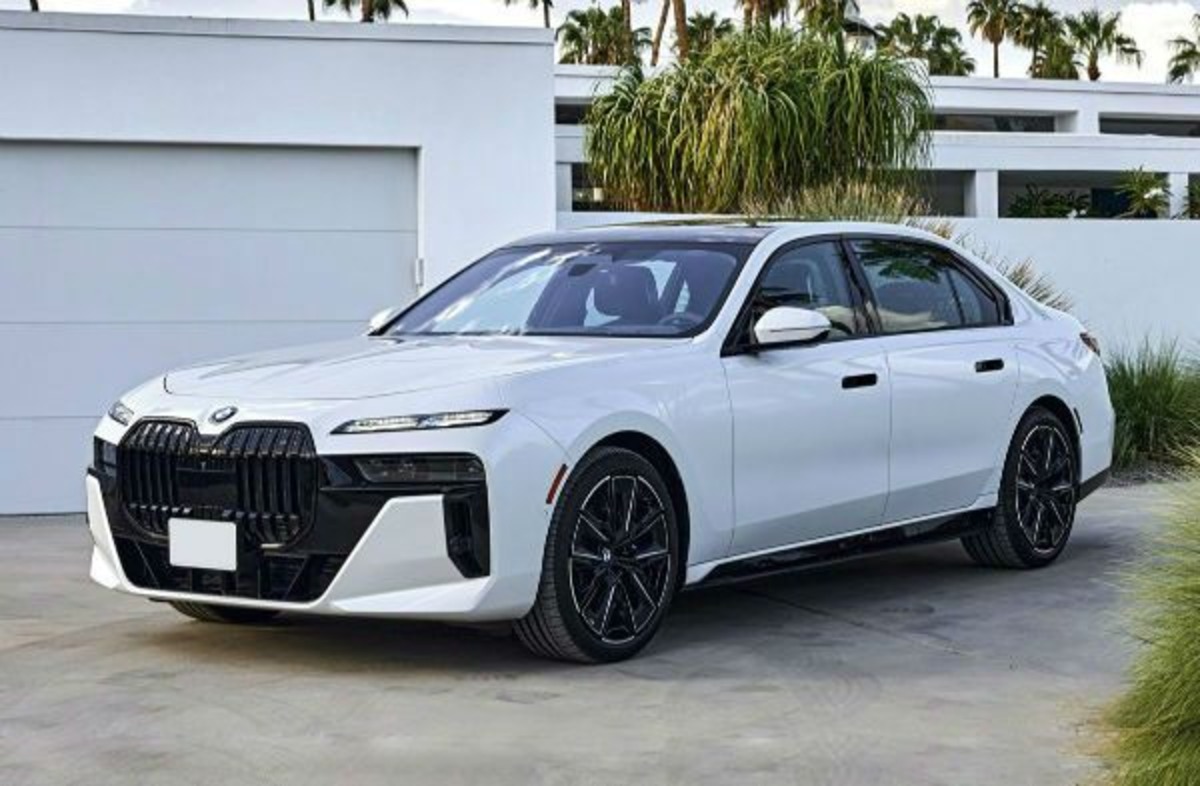
2. BMW 7 Series (With Run-Flat Tires)
The BMW 7 Series is the flagship luxury sedan representing the pinnacle of German automotive engineering and opulence. However, this status comes with substantial ownership costs—especially concerning tire replacement. One of the most expensive components of the 7 Series maintenance is its run-flat tires, which are standard on almost all models.
Run-flat tires allow drivers to continue driving for a limited distance after a puncture, thanks to reinforced sidewalls that can support the vehicle’s weight without air pressure. While this technology offers safety and convenience benefits, it comes with a steep price premium over traditional tires.
Replacing a full set of run-flat tires on a BMW 7 Series generally costs between $1,600 and $2,400. The tires themselves are larger—typically 19 to 21 inches—and come with complex tread designs optimized for high-speed stability and luxury ride comfort.
Because run-flat tires are reinforced, their construction uses more material and advanced manufacturing processes, driving up retail prices significantly. Additionally, run-flats tend to have stiffer sidewalls that transmit more road feedback, often leading to a shorter tread life of around 20,000 to 30,000 miles in real-world driving.
The 7 Series also features a staggered wheel setup, meaning the rear tires are wider than the fronts. This design improves traction and handling but limits tire rotation options, as tires are not interchangeable front-to-back. This limitation forces owners to replace all four tires simultaneously, even if only the rear tires are worn out.
Since these tires are specialized and costly, the expense is magnified. Moreover, BMW’s sophisticated suspension system requires precise wheel alignment to prevent uneven wear. Any misalignment can rapidly degrade tire performance and durability, leading to increased replacement frequency.
Another factor adding to tire replacement costs is the scarcity of repair options for run-flat tires. These tires are notoriously difficult to patch or repair after damage, so even minor punctures may necessitate full replacements. Many owners also prefer OEM or premium tires from brands like Michelin or Bridgestone to maintain the luxury sedan’s performance and ride quality, which adds to the price.
Additionally, installation labor for run-flats is often higher due to their stiff construction, and specialized equipment may be required. Overall, while the BMW 7 Series provides world-class luxury and performance, its advanced run-flat tire system significantly inflates ownership costs compared to standard vehicles.
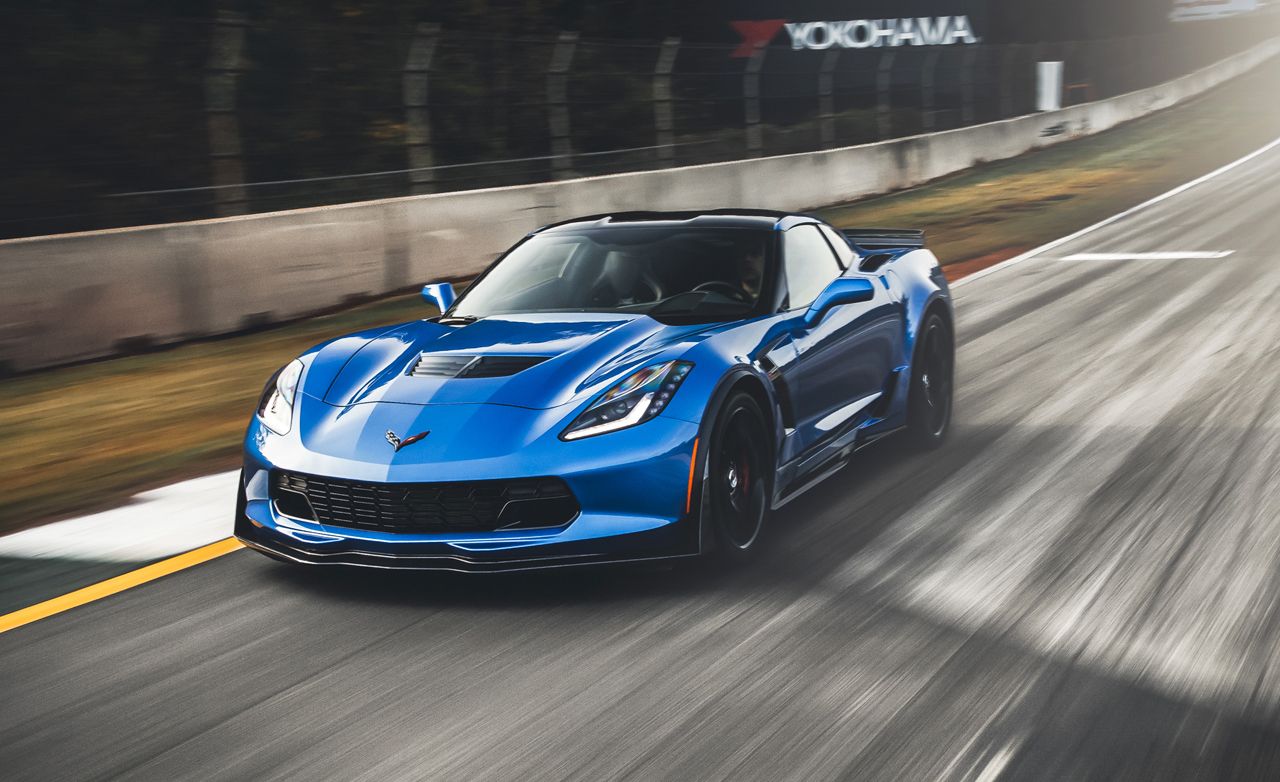
3. Chevrolet Corvette (C7 and C8)
The Chevrolet Corvette, America’s iconic sports car, offers breathtaking performance and style, but it also carries one of the steepest tire replacement bills in its class. Both the C7 and C8 generations feature wide, low-profile tires designed for razor-sharp handling and exceptional grip at high speeds.
These ultra-high-performance tires aren’t designed for long tread life; instead, they prioritize traction and cornering capabilities, which wear down rubber rapidly. A full set of replacement tires, including installation, often costs between $1,500 and $2,200, making them among the priciest in the sports car segment.
The Corvette’s rear tires are especially expensive and wear out faster than the front due to their wider size and the high horsepower delivered to the rear axle. This staggered setup prevents rotation between front and rear tires, so owners often need to replace the rear tires more frequently.
While front tires may last 20,000 to 30,000 miles, rear tires can wear down in as little as 10,000 to 15,000 miles, particularly if the car is driven aggressively or taken to the track. Track use, favored by many Corvette enthusiasts, drastically reduces tire lifespan and escalates replacement frequency.
Another contributor to the high tire costs is the Corvette’s need for exact-match tires. The C7 and C8 models require specific tire sizes and compounds that can handle their unique handling dynamics.
OEM tires from brands like Michelin (Pilot Sport series) are the recommended replacements for optimal performance, but come with premium pricing. Owners who compromise with cheaper or non-OEM tires often face degraded handling and safety, so many stick with the pricier options.
The Corvette’s sophisticated suspension also requires precise wheel alignment and balancing to maintain performance and prevent uneven tire wear. Poor alignment can cause rapid tread wear and necessitate earlier tire replacement.
Installation labor for these specialized tires can be costlier than average due to the need for careful mounting and balancing of ultra-low-profile tires. For all its speed and excitement, owning a Corvette means committing to a hefty recurring tire expense that rivals some supercars.

4. Mercedes-AMG E63 S
The Mercedes-AMG E63 S is a high-performance luxury sedan that combines brutal horsepower with refined German engineering. But this exceptional performance comes with a significant cost—especially when it comes to tires.
The AMG E63 S features 20- or 21-inch staggered wheels wrapped in high-performance summer tires engineered to handle the car’s more than 600 horsepower and dynamic all-wheel-drive system.
A full replacement of these tires typically costs between $1,800 and $2,500, making tire ownership for the E63 S considerably more expensive than the average sedan or even many sports cars.
One major factor behind these costs is tire wear caused by the AMG’s tremendous power and torque. The car’s dynamic torque vectoring system pushes immense power to individual wheels to maximize cornering grip, which significantly accelerates tire degradation, especially under spirited driving conditions.
Despite the AWD system distributing power front to rear, rear tires tend to wear faster due to the higher torque demand during acceleration. Most owners find themselves replacing tires every 12,000 to 18,000 miles—far sooner than the 30,000-50,000 miles typical of many luxury sedans.
The staggered tire setup further complicates matters. Wider rear tires mean that rotation options are limited or nonexistent, requiring owners to replace all four tires at once.
This dramatically increases the cost per tire change. Additionally, Mercedes-AMG vehicles require tires that meet specific criteria in terms of speed ratings, grip levels, and load capacity to maintain handling balance and safety. This restricts tire choices and prevents owners from purchasing lower-cost alternatives.
Moreover, the E63 S’s complex adaptive suspension and precise wheel alignment specifications demand specialized service and high-quality balancing, increasing installation labor costs.
Many owners in colder climates also purchase a separate set of winter tires and wheels to protect the summer tires from damage and to maintain optimal performance year-round, essentially doubling the annual tire-related expense.
Lastly, Mercedes-AMG tires tend to be summer-only performance compounds that don’t perform well in cold or wet conditions. This limitation forces owners in four-season climates to invest heavily in additional tire sets. Taken together, these factors mean that the Mercedes-AMG E63 S’s tire costs are among the highest for luxury sedans, reflecting its exceptional capabilities and specialized requirements.
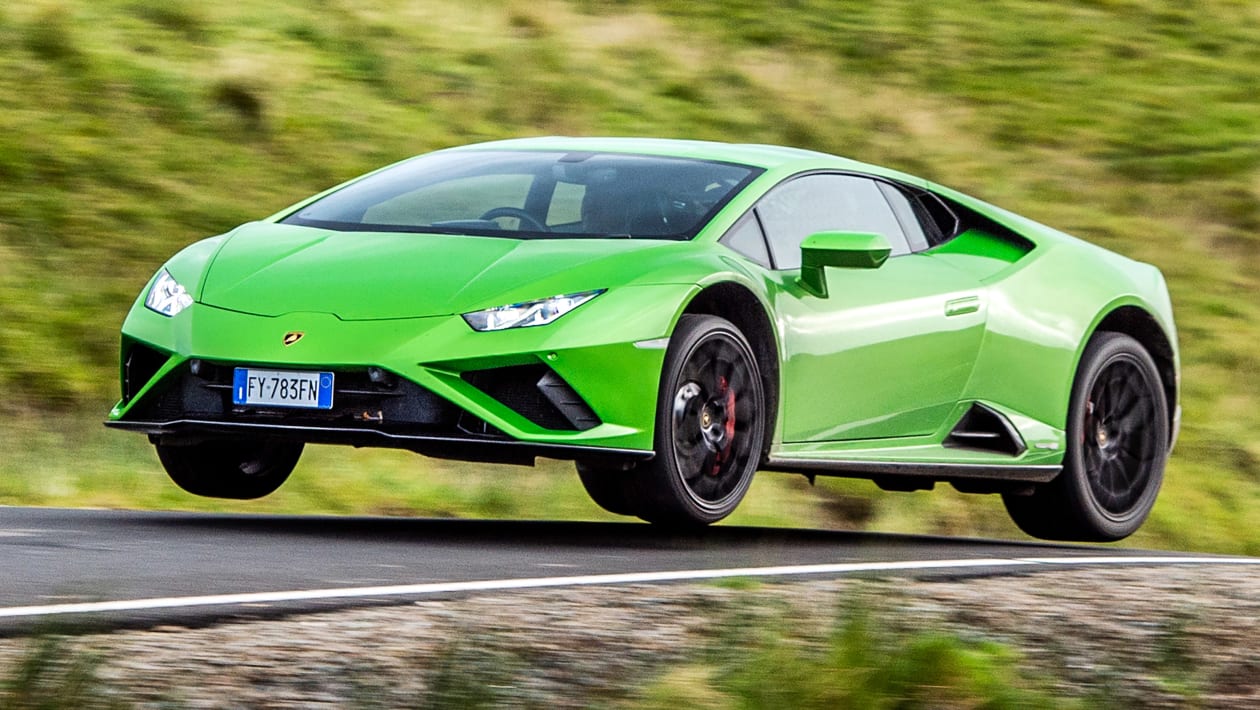
5. Lamborghini Huracán
Few cars evoke the same level of awe and admiration as the Lamborghini Huracán, a supercar engineered for jaw-dropping speed, precision, and style. However, owning such a masterpiece entails accepting the financial realities of its maintenance, especially when it comes to tire replacement.
The Huracán rolls on massive 20-inch wheels shod with ultra-high-performance Pirelli P Zero tires specially formulated for extreme grip and speed stability. Because these tires are produced in limited quantities with specialized compounds and construction, they come at an exceptionally high cost—often exceeding $3,000 for a full set, excluding installation.
The Huracán’s tire wear is exacerbated by multiple factors. The car’s mid-engine layout and all-wheel-drive system generate tremendous torque, which stresses the tires, particularly on acceleration and cornering.
The low-profile nature of the tires also means thinner tread and more susceptibility to wear and damage from road hazards. Many Huracán owners report tire lifespans as low as 5,000 to 10,000 miles under spirited driving or track use, which necessitates frequent and costly replacements.
Further adding to the cost is the Huracán’s use of asymmetric and directional tires that cannot be rotated front to rear, reducing the ability to extend tread life.
These tires require exact size and compound matches to maintain the car’s razor-sharp handling and performance characteristics. Cheaper or incorrect tires can compromise safety and dramatically degrade driving dynamics, so owners typically opt for OEM-grade replacements despite the price.
Installation labor is also pricier for the Huracán, as mounting ultra-low-profile tires on exotic wheels demands skilled technicians and specialized balancing equipment to avoid vibration and handling issues. Some owners even go so far as to purchase dedicated tire warmers or trackers to keep tire performance optimal, reflecting the extreme nature of this supercar’s maintenance.
In short, while the Lamborghini Huracán delivers an unparalleled driving experience, its tire replacement costs serve as a stark reminder that owning such an elite vehicle requires a significant financial commitment beyond the sticker price. Tires, in many ways, become a recurring premium expense that matches the car’s exotic pedigree.
Also Read: 5 Sedans With Best Turning Radius And 5 With Widest
In the landscape of car ownership, tire replacement cost is a pivotal but frequently underestimated factor affecting overall maintenance budgets. As this article illustrates, the cost of replacing tires can vary wildly—from a few hundred dollars for common economy cars to several thousand for high-performance luxury and supercars.
This variation stems from a combination of tire size, vehicle engineering, performance demands, and tire technology. Recognizing these factors helps car owners anticipate and manage expenses, enabling more informed decisions when purchasing or maintaining their vehicles.
The five cars with the lowest tire-replacement costs—like the Toyota Corolla, Honda Civic, Hyundai Elantra, Kia Forte, and Nissan Sentra—offer a compelling lesson in how vehicle design and market availability of tires converge to drive affordability. These vehicles typically use smaller, more common tire sizes that are widely produced, creating a competitive pricing environment.
Their engineering prioritizes even tire wear, moderate power outputs, and durability, extending the life of each tire set. Routine maintenance such as regular rotations and alignments is easier and less costly, all contributing to lower cumulative tire expenses over time. For many drivers, these models offer peace of mind through predictable and manageable tire costs that fit within tighter budgets.
Conversely, the five cars with the highest tire-replacement costs—Tesla Model S Performance, BMW 7 Series with run-flats, Chevrolet Corvette, Mercedes-AMG E63 S, and Lamborghini Huracán—highlight how tire costs escalate when performance and luxury take center stage. Larger wheels, specialized tire compounds, and technologies like run-flat capability all contribute to inflated prices.
These vehicles often require premium tires engineered to handle extreme power, torque, and cornering forces, yet these tires tend to wear out quickly due to the stress placed on them. The presence of staggered tire setups limits rotation options, forcing more frequent and costly replacements.
Furthermore, installation and alignment labor costs can be significantly higher due to specialized equipment and skills needed to service these high-end vehicles.
It is also important to consider that driving style plays a critical role in tire longevity. Even the most affordable tire setups will wear prematurely if driven aggressively, while careful, moderate driving and diligent maintenance can extend tire life on even the most demanding cars.
For owners of performance vehicles, accepting the reality of higher tire costs is part of the commitment to enjoying superior speed, handling, and aesthetics. Meanwhile, economy car drivers benefit from knowing their tire costs are unlikely to become a financial burden.
For anyone considering a vehicle purchase, factoring in tire replacement cost alongside purchase price, insurance, fuel, and other maintenance expenses gives a clearer picture of total ownership cost. Additionally, understanding tire cost variability empowers owners to explore aftermarket tire options, shop competitively, and maintain their vehicles to maximize tire life.
As the automotive industry evolves with trends like electric vehicles and performance tech, tire technology will continue to adapt, potentially shifting these cost dynamics further in the future.
In summary, tires are a crucial but often overlooked piece of the ownership puzzle, influencing safety, performance, and long-term affordability. Whether you drive a practical sedan with modest replacement costs or an exotic supercar demanding premium tires, understanding what drives tire expenses helps you prepare financially and maintain your vehicle optimally.
By appreciating the spectrum of tire costs illustrated in this article, you gain valuable insight into one of the most important yet hidden aspects of car ownership—a factor that can either keep your budget in check or surprise you with unexpectedly high bills. Equipped with this knowledge, you are better positioned to make smart choices that align with your driving needs, preferences, and wallet.

